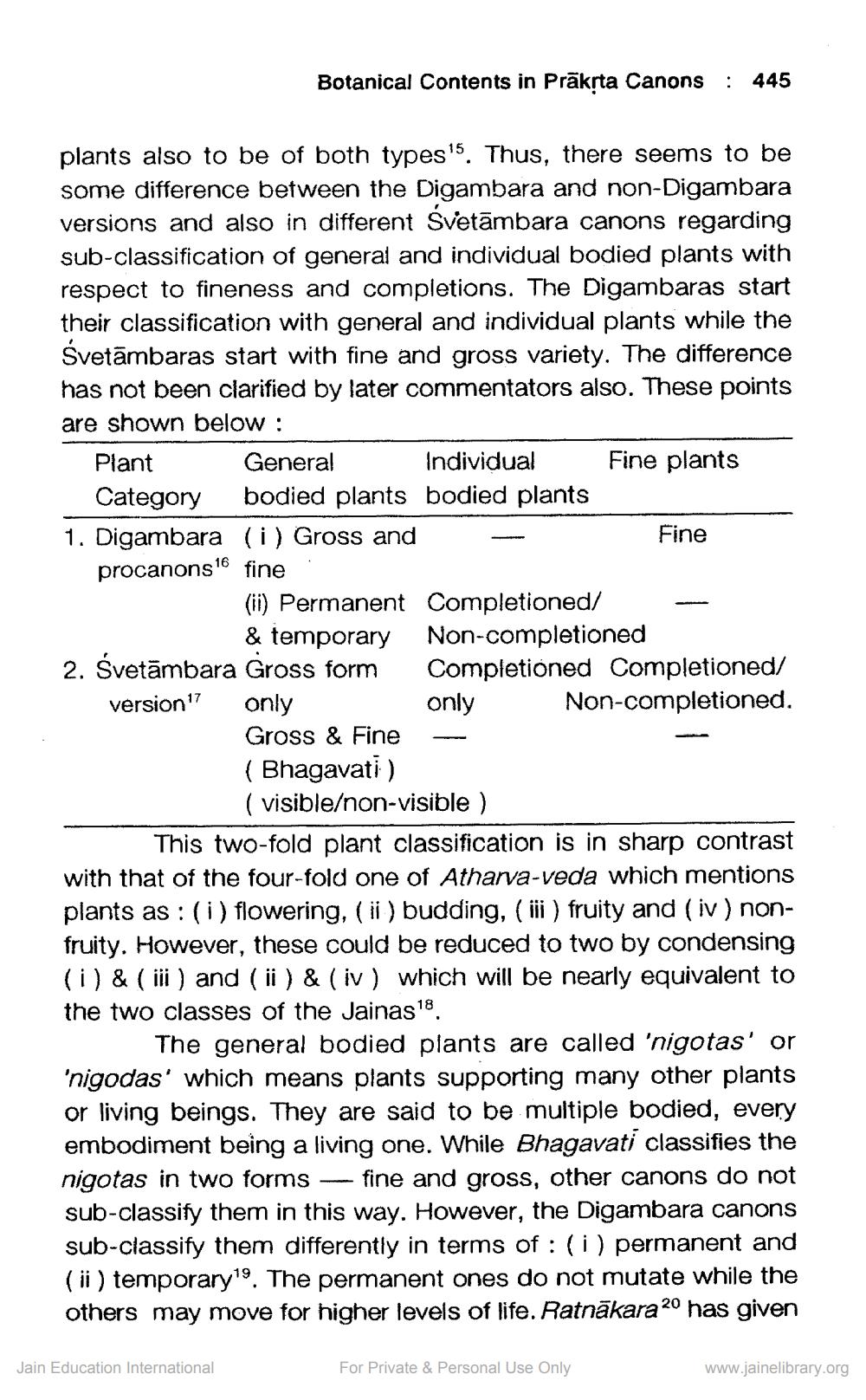________________
Botanical Contents in Prākṛta Canons : 445
plants also to be of both types 15. Thus, there seems to be some difference between the Digambara and non-Digambara versions and also in different Svetambara canons regarding sub-classification of general and individual bodied plants with respect to fineness and completions. The Digambaras start their classification with general and individual plants while the Śvetāmbaras start with fine and gross variety. The difference has not been clarified by later commentators also. These points are shown below:
Plant
Category
1. Digambara (i) Gross and procanons 16 fine
General
Individual bodied plants bodied plants
(ii) Permanent Completioned/ & temporary
2. Svetāmbara Gross form
version17
Jain Education International
only Gross & Fine
(Bhagavati)
Non-completioned
―――
Fine plants
only
Completioned Completioned/ Non-completioned.
( visible/non-visible)
This two-fold plant classification is in sharp contrast with that of the four-fold one of Atharva-veda which mentions plants as: (i) flowering, (ii) budding, (iii) fruity and (iv) nonfruity. However, these could be reduced to two by condensing (i) & (iii) and (ii) & (iv) which will be nearly equivalent to the two classes of the Jainas18.
Fine
The general bodied plants are called 'nigotas' or 'nigodas' which means plants supporting many other plants or living beings. They are said to be multiple bodied, every embodiment being a living one. While Bhagavati classifies the nigotas in two forms fine and gross, other canons do not sub-classify them in this way. However, the Digambara canons sub-classify them differently in terms of: (i) permanent and (ii) temporary19. The permanent ones do not mutate while the others may move for higher levels of life. Ratnakara 20 has given
For Private & Personal Use Only
www.jainelibrary.org




